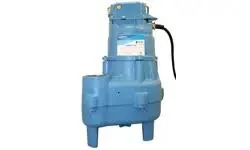Spanish
- Afrikaans
- Albanian
- Amharic
- Arabic
- Armenian
- Azerbaijani
- Basque
- Belarusian
- Bengali
- Bosnian
- Bulgarian
- Catalan
- Cebuano
- Corsican
- Croatian
- Czech
- Danish
- Dutch
- English
- Esperanto
- Estonian
- Finnish
- French
- Frisian
- Galician
- Georgian
- German
- Greek
- Gujarati
- Haitian Creole
- hausa
- hawaiian
- Hebrew
- Hindi
- Miao
- Hungarian
- Icelandic
- igbo
- Indonesian
- irish
- Italian
- Japanese
- Javanese
- Kannada
- kazakh
- Khmer
- Rwandese
- Korean
- Kurdish
- Kyrgyz
- Lao
- Latin
- Latvian
- Lithuanian
- Luxembourgish
- Macedonian
- Malgashi
- Malay
- Malayalam
- Maltese
- Maori
- Marathi
- Mongolian
- Myanmar
- Nepali
- Norwegian
- Norwegian
- Occitan
- Pashto
- Persian
- Polish
- Portuguese
- Punjabi
- Romanian
- Russian
- Samoan
- Scottish Gaelic
- Serbian
- Sesotho
- Shona
- Sindhi
- Sinhala
- Slovak
- Slovenian
- Somali
- Spanish
- Sundanese
- Swahili
- Swedish
- Tagalog
- Tajik
- Tamil
- Tatar
- Telugu
- Thai
- Turkish
- Turkmen
- Ukrainian
- Urdu
- Uighur
- Uzbek
- Vietnamese
- Welsh
- Bantu
- Yiddish
- Yoruba
- Zulu
Telephone: +86 13120555503
Email: frank@cypump.com
Sep . 22, 2024 07:58 Back to list
submersible sewage ejector pump
Exploring the Submersible Sewage Ejector Pump A Vital Component of Modern Waste Management
In the realm of wastewater management, the submersible sewage ejector pump plays a crucial role in ensuring that sewage and wastewater are effectively transported from lower to higher elevation points. This technology is essential for both residential and municipal applications, particularly in locations where gravity drainage is impractical or impossible.
How It Works
The submersible sewage ejector pump operates from within a sewage basin, where it remains submerged beneath the water level. Unlike traditional centrifugal pumps that may require priming before they start, submersible pumps are designed to work underwater, making them much more efficient and reliable in handling liquid waste.
The pump is equipped with a motor that drives an impeller, creating a centrifugal force that pushes the sewage upward through discharge pipes. This process is initiated by a float switch that automatically turns the pump on when the water level rises to a certain point and turns it off when the desired water level is reached. This automated system ensures that the sewage is continuously managed without the need for manual intervention.
Key Features and Benefits
1. Compact Design One of the major advantages of submersible sewage ejector pumps is their compact size. Since they are installed below ground, they take up minimal surface space compared to above-ground pumping systems. This is particularly beneficial in residential areas where space is often limited.
2. Reduced Noise Levels Because the pump operates submerged in water, noise levels are significantly reduced. This is an important consideration for residential applications where noise pollution can be a concern.
submersible sewage ejector pump

3. High Efficiency Submersible pumps are known for their high efficiency in transferring sewage. They can handle solids and debris, which makes them suitable for various wastewater sources, including bathroom waste, kitchen waste, and even stormwater.
4. Durability These pumps are built to withstand harsh environments. They are typically constructed from high-quality materials, such as stainless steel or cast iron, that resist corrosion and wear over time, ensuring a longer lifespan and reliable performance.
5. Versatility Submersible sewage ejector pumps can be used in a variety of applications, including residential homes, commercial establishments, and municipal sewage systems. They are ideal for basements, low-lying areas, and locations where gravity flow is insufficient.
Maintenance Considerations
While submersible sewage ejector pumps are designed for durability and efficiency, regular maintenance is crucial to ensure their optimal performance. Routine checks can help prevent clogs, mechanical failures, and unexpected breakdowns. It is essential to inspect the pump regularly for any signs of wear, clean the impeller, and ensure the float switch is functioning properly.
Conclusion
The submersible sewage ejector pump is an indispensable tool in the effective management of wastewater, providing a reliable solution for moving sewage where traditional gravity methods fail. With its compact design, low noise operation, and robust performance, it stands out as a key component in ensuring that modern communities can dispose of waste safely and efficiently. By investing in high-quality submersible pumps and committing to regular maintenance, consumers and municipalities can achieve a sustainable waste management system that meets today's environmental standards.
-
Horizontal Split Case Pump with GPT-4 Turbo | High Efficiency
NewsAug.01,2025
-
ISG Series Pipeline Pump - Chi Yuan Pumps | High Efficiency, Durable Design
NewsAug.01,2025
-
Advanced Flue Gas Desulfurization Pump with GPT-4 Turbo | Durable & Efficient
NewsJul.31,2025
-
ISG Series Vertical Pipeline Pump - Chi Yuan Pumps | Advanced Hydraulic Design&Durable Construction
NewsJul.31,2025
-
ISG Series Vertical Pipeline Pump - Chi Yuan Pumps | Energy Efficient & Low Noise
NewsJul.31,2025
-
pipeline pump - Chi Yuan Pumps Co., LTD.|High Efficiency&Low Noise
NewsJul.31,2025










